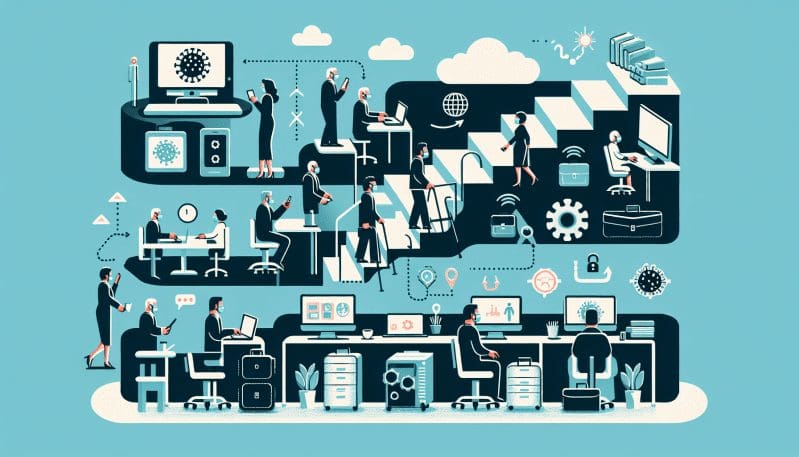The Future of Organizational Culture: Adapting to a Post-Pandemic Workforce
- Home
- The Future of Organizational Culture: Adapting to a Post-Pandemic Workforce

- Editors Desk
- April 17, 2024
- 0 Comments
The global pandemic has left an indelible mark on the world of work, ushering in an era of change that has swept across industries, reshaping how we think about our daily routines, our workspaces, and our interactions with colleagues. Organizations have been thrust into a transformative phase, compelled to reevaluate and reinvent their cultural identities in response to a crisis that has altered every facet of the workplace.
As we collectively embrace this post-pandemic reality, the key to a company’s success lies within its ability to navigate these uncharted waters with agility and foresight. The workplace we once knew has dissolved, giving rise to an environment where flexibility reigns supreme, wellness is a poignant focus, and inclusivity is not just encouraged but expected.
Forward-thinking companies are setting new benchmarks for what it means to be an employer of choice. They’re not only adapting but pioneering cultural shifts that prioritize the well-being of their employees. Google, for example, has redefined its approach to work-life balance by offering more remote work options and acknowledging the need for mental health days. Meanwhile, Salesforce has embraced a new ‘success from anywhere’ model, allowing employees to decide how, when, and where they work best.
These initiatives signal a broader redefinition of workplace culture, one that challenges the age-old convention of the 9-to-5 office grind. As these leading companies demonstrate, embracing a culture that supports a distributed workforce can lead to increased employee satisfaction, higher levels of productivity, and an ability to tap into a diverse global talent pool.
But the question remains: can traditional office-based companies learn from this remote work experiment? There’s a compelling argument that they not only can but must. By fostering a culture that values employee autonomy and flexibility, businesses can cultivate a more adaptive and resilient workforce, equipped to navigate future disruptions with grace.
However, such cultural shifts are not without potential drawbacks. The blurring of work-life boundaries can lead to burnout, and the lack of in-person interaction may impinge on team cohesion. It’s a delicate balance to strike, and as with any significant change, there are risks alongside the rewards.
To remain competitive and responsive to the evolving needs of the workforce, organizations must engage in continuous dialogue with their employees, leveraging feedback to iteratively improve their cultural initiatives. Investment in the right technology to facilitate remote collaboration, a recommitment to transparent communication, and policies that truly address work-life balance are all essential measures.
As we look to the horizon, it’s clear that the organizational culture has reached a pivotal inflection point. The companies that succeed in this new era will be those that take bold steps to foster an environment that empowers their employees to thrive—both professionally and personally. The future of work is not a distant concept; it is here, and it beckons us to reimagine the potential of our organizations, our workers, and the very nature of our workplaces.
In conclusion, as we venture forth into this brave new world of work, let us take with us the lessons learned during these times of trial and triumph. The future belongs to those who are ready to build it, one adapted cultural norm at a time.

Leave A Comment